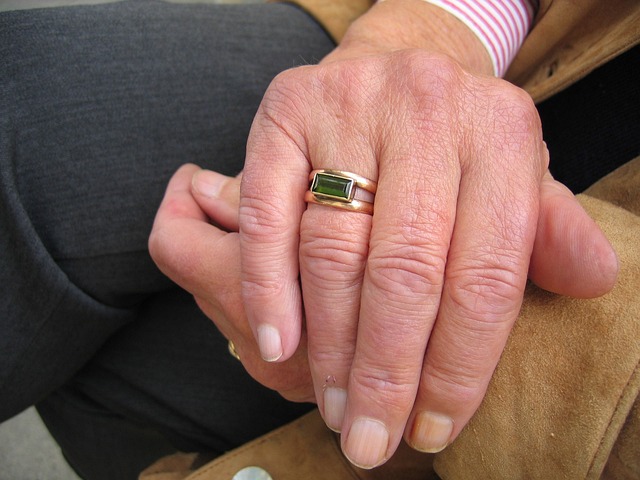Antique silver jewelry crafted with Nottingham gold stands as a testament to historical sophistication and artistry, featuring elaborate ornamentation and precise engravings that showcase the blend of traditional silversmithing techniques with detailed designs. These collectible pieces are distinctive for their durability, luster, and ability to highlight intricate details, particularly in their natural, religious, and mythological motifs. Nottingham gold, a luxurious alloy with a storied history from Nottingham, England, is known for its exceptional quality and longevity, contributing to the aesthetic charm and historical narrative of the jewelry. These items not only appeal to those who appreciate their unique designs and craftsmanship but also offer a cultural insight and complement modern fashion trends while maintaining a link to the past.
Maintaining the integrity of Nottingham gold jewelry requires careful handling, clean storage, and gentle cleaning to preserve its luster and prevent tarnish. Proper care includes using moistened soft cloths with mild dish soap for cleaning, avoiding harsh chemicals and abrasives, and drying thoroughly after any cleansing process. Regular checks for wear and tear, along with professional conservation for deeper restoration needs, ensure these pieces retain their enduring beauty and sentimental value as family heirlooms.
Antique silver jewelry, often adorned with ornate details and delicate engravings, captures a bygone era’s elegance. This article delves into the enduring charm of such pieces, particularly those crafted from Nottingham gold, which hold a unique place in jewelry history for their exceptional craftsmanship. Explore the rich heritage behind these timeless treasures and learn to identify their intricate artistry. Additionally, gain valuable insights on preserving your antique silver heirlooms with maintenance and conservation tips that ensure their luster endures as time goes on.
- Unveiling the Timeless Elegance of Antique Silver Jewelry with Ornate Details and Engravings
- The Allure of Nottingham Gold: A Glimpse into its History and Craftsmanship
- Identifying and Appreciating the Intricate Artistry in Vintage Silver Pieces
- Caring for Your Heirloom: Maintenance and Conservation Tips for Antique Silver Jewelry
Unveiling the Timeless Elegance of Antique Silver Jewelry with Ornate Details and Engravings

Antique silver jewelry, adorned with intricate ornate details and meticulous engravings, epitomizes a bygone era’s sophistication and artistry. These timeless pieces often incorporate Nottingham gold, an alloy of silver that is typically 90% pure silver with 10% other metals such as copper for added strength and durability. The use of Nottingham gold in these pieces ensures a rich luster and longevity, making them a testament to the craftsmanship of earlier periods. The artisans who created these jewelry items masterfully combined traditional silversmithing techniques with exquisite designs, resulting in unique and enduring pieces that continue to captivate collectors and enthusiasts alike. Nottingham gold’s ability to hold fine details is particularly evident in the elaborate engravings often found on antique brooches, bracelets, and rings. These delicate etchings can range from floral motifs and geometric patterns to religious iconography and mythological scenes, each telling a story or reflecting the cultural ethos of their time. The allure of these pieces lies not only in their aesthetic beauty but also in their historical significance, offering a tangible connection to the past and a window into the lives and styles of previous generations. Collectors are drawn to these pieces for their unique designs, the quality of the craftsmanship, and the way they can complement contemporary fashion while holding a piece of history.
The Allure of Nottingham Gold: A Glimpse into its History and Craftsmanship

Nottingham gold, a silver alloy renowned for its exceptional quality and durability, has long captivated those with an appreciation for fine jewelry. Its origins trace back to the historic city of Nottingham in England, where, since the 18th century, skilled artisans have been crafting this luxurious metal, often combining it with other precious materials to enhance its beauty and strength. The allure of Nottingham gold lies not only in its malleability, allowing for intricate designs, but also in the rich history that it encapsulates. Each piece of jewelry bearing the hallmark of Nottingham gold is a testament to the mastery of British silversmithing traditions, a legacy that continues to be upheld by contemporary craftsmen and designers.
The traditional process of creating Nottingham gold involves a careful blending of sterling silver with other metals, typically copper and zinc, to achieve its characteristic yellow hue and resilience. This alloy is then shaped into exquisite pieces adorned with ornate details and engravings, showcasing the artisan’s skill in interpreting historical motifs and contemporary designs alike. The end result is a piece that not only embodies the craftsmanship of its creators but also offers a wearable piece of history, connecting the wearer to the timeless elegance associated with Nottingham gold jewelry.
Identifying and Appreciating the Intricate Artistry in Vintage Silver Pieces

Antique silver jewelry with ornate details and engravings stands as a testament to the exquisite craftsmanship of bygone eras, where artistry and functionality harmoniously coalesced. Nottingham gold, an alloy of silver with a small amount of copper that gives it a warm golden hue, is particularly prized for its luster and durability, making it an ideal medium for showcasing intricate designs. To identify the intricate artistry inherent in vintage silver pieces, one must look beyond the surface to understand the techniques employed by master silversmiths of the past. Examination of the jewelry’s maker’s mark can provide insight into the craftsman’s skill and the era from which it hails, while the quality of the engraving and detailing reveals the piece’s authenticity and artistic value. Engravings in Nottingham gold often feature floral motifs, scrollwork, and classical themes, each meticulously rendered to highlight the metal’s reflective qualities. Appreciating these pieces involves recognizing not only their aesthetic charm but also the historical context in which they were created. The knowledge of their origin and the technical prowess required to produce such detailed works enriches the experience of collecting and wearing these timeless treasures. Collectors and enthusiasts often seek out pieces that exhibit exceptional craftsmanship, such as those with fine filigree or hand-chased surfaces, which not only add a touch of elegance to any ensemble but also serve as wearable art that connects the wearer to a rich heritage of silversmithing excellence.
Caring for Your Heirloom: Maintenance and Conservation Tips for Antique Silver Jewelry

When it comes to preserving the luster and integrity of antique silver jewelry, including pieces crafted from Nottingham gold, a meticulous maintenance routine is paramount. To maintain the pristine condition of your heirloom, always handle your jewelry with clean hands to prevent oils and residues from transferring onto the surface. Store your treasured items in a soft fabric-lined box away from direct sunlight or humid environments to protect them from tarnish and oxidation. Regular cleaning is essential but should be approached delicately. Use a soft cloth slightly dampened with clean water and mild dish soap to gently polish the pieces, focusing on removing any dirt without applying too much pressure that could scratch the delicate surfaces. Avoid using abrasive chemicals or cleaners, as these can damage the silver and intricate engravings characteristic of Nottingham gold jewelry.
For more thorough cleaning, a solution of one part hydrogen peroxide to two parts water can be used, but this should be done sparingly. After cleaning, ensure the piece is completely dry to prevent water spots or further tarnish. Conservation tips for antique silver jewelry also include occasional inspections to identify and address any signs of wear or damage early on. Professional conservationists specializing in silver can provide additional treatments to restore and protect your pieces, especially if they show significant aging or have valuable sentimental value. Regular maintenance not only extends the life of your antique silver jewelry but also ensures that these exquisite works of art, such as those made from Nottingham gold, remain as beautiful and meaningful heirlooms for generations to come.
Antique silver jewelry, particularly pieces featuring the rich craftsmanship of Nottingham gold, stand as testaments to the artistry and skill of bygone eras. The allure of these vintage treasures lies not only in their timeless elegance but also in the history and meticulous attention to detail embedded within each ornate engraving. As collectors and enthusiasts continue to appreciate and preserve these works of wearable art, it is clear that maintaining their integrity through careful conservation ensures their legacy for generations to come. Invaluable as both heirlooms and objects of beauty, antique silver jewelry with Nottingham gold accents offers a window into the past, offering contemporary admirers a tangible connection to history’s aesthetic splendor.
